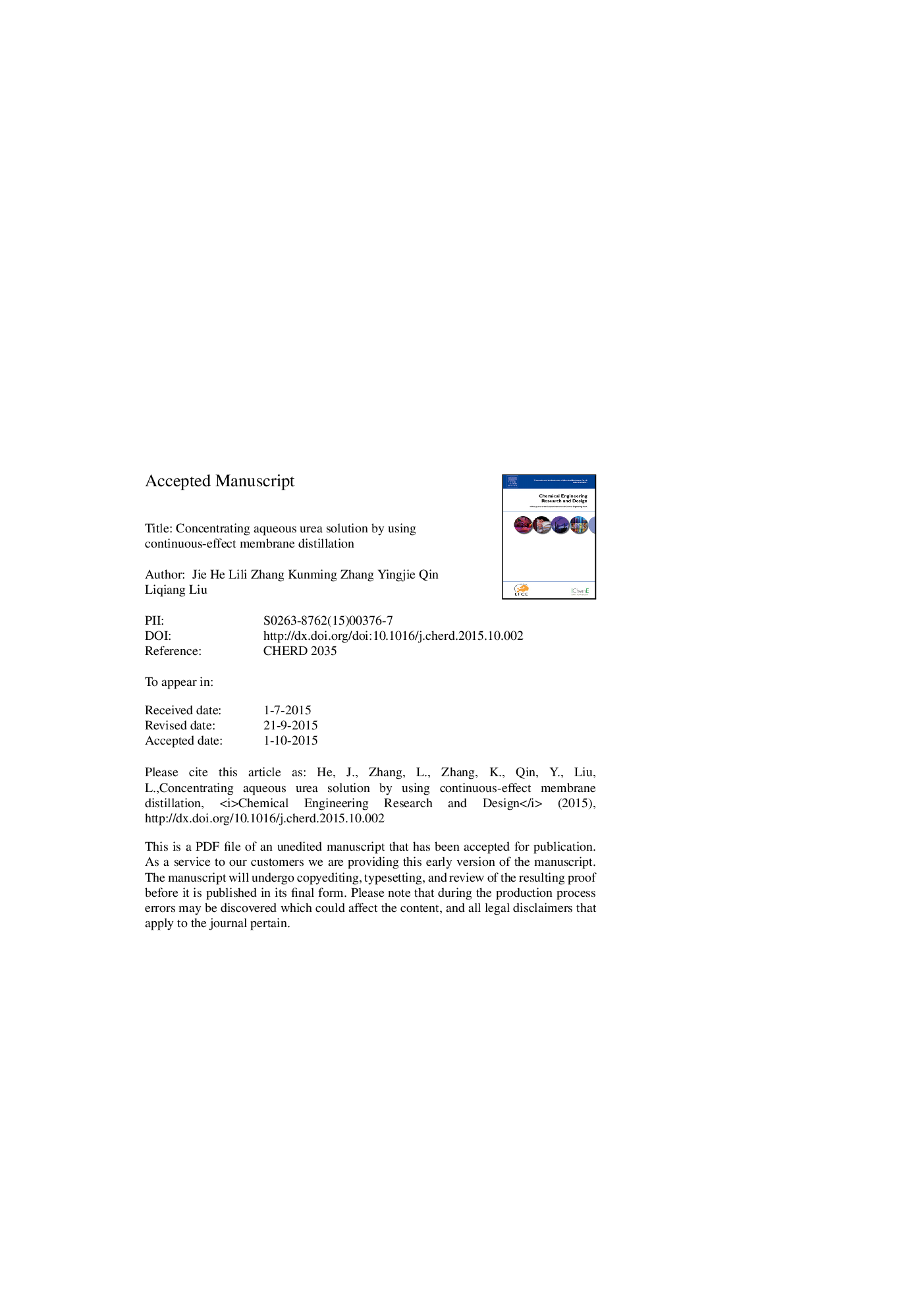| Article ID | Journal | Published Year | Pages | File Type |
|---|---|---|---|---|
| 7007242 | Chemical Engineering Research and Design | 2015 | 60 Pages |
Abstract
In order to remove and recover urea from its dilute aqueous solutions, e.g., wastewater drained from urea synthesis plants, continuous-effect membrane distillation (CEMD) process providing an extremely high thermal efficiency was investigated to concentrate aqueous solution containing urea. By using an air-gap membrane distillation module fabricated with both porous hydrophobic hollow fibers and dense-wall hollow fibers, the CEMD operation-mode can easily realize the direct recovery of condensation heat of the permeate to preheat the cold feed in situ within a single module. A series of experiments were conducted to evaluate the performance of CEMD process in terms of permeation flux (Jw), gain output ratio (GOR) and rejection factor (Rf) under various operating conditions, such as the feed-in concentration, cold feed-in temperature, heated feed-in temperature and feed flow rate. The maximum values of GOR = 14.0, Jw = 6.8 L hâ1 mâ2 and Rf = 99.99% were achieved respectively. When a feed solution of 1.0 wt% urea was used as a sample wastewater, the feed could be at least concentrated to 40 wt% with high values of GOR, Jw and Rf. The experimental data showed that the mild operation condition could also help to avoid the urea loss from its thermal hydrolysis. A brief theoretical model was introduced and used to discuss experimental results.
Keywords
Related Topics
Physical Sciences and Engineering
Chemical Engineering
Filtration and Separation
Authors
Jie He, Lili Zhang, Kunming Zhang, Yingjie Qin, Liqiang Liu,
